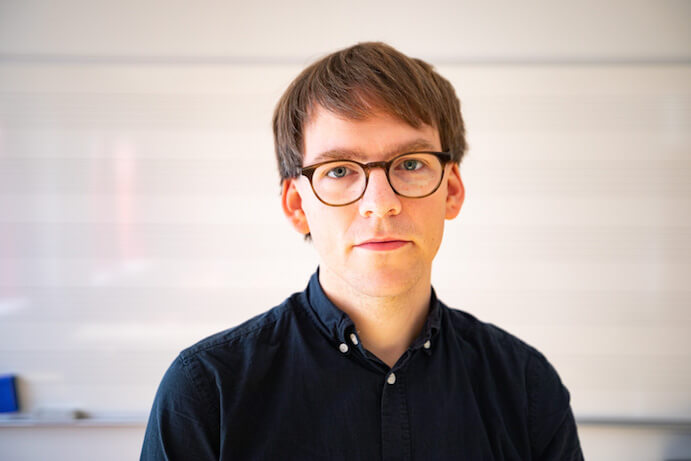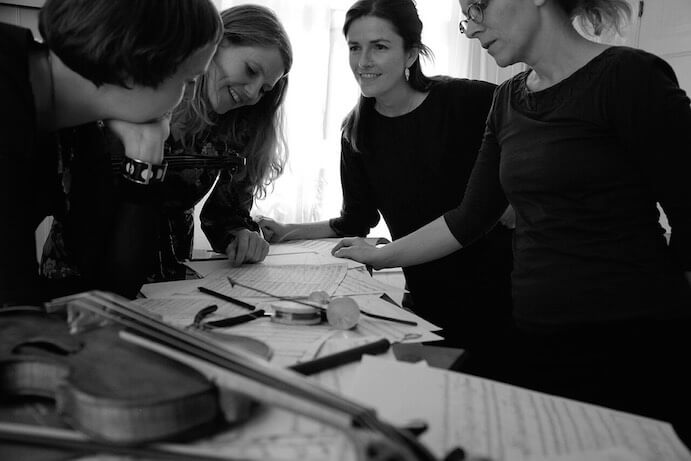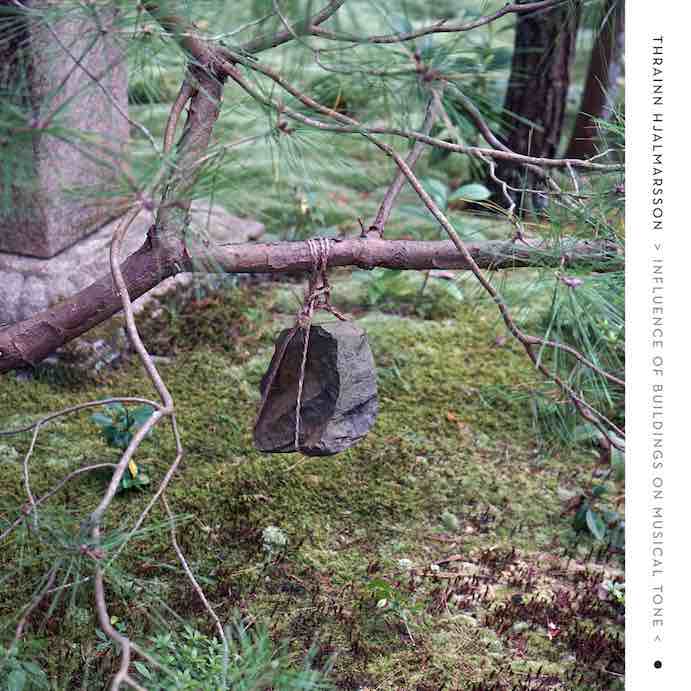Þráinn Hjálmarsson has found great success in his native Iceland and throughout Europe as a composer of experimental and genre defying music. He is also a curator of the contemporary music series Phonemes and part of the composer collective S.L.Á.T.U.R. His latest project is an album titled Influence of Buildings on Musical Tone consisting of five recent solo and chamber works. These compositions are a sonic experience that is hard to put into words and oddly addicting.
The title track Influence of Buildings of Musical Tone pulls inspiration from the 1927 journal article of the same name by Hope Bagenal. The journal focuses on how different acoustical spaces affect tone, pitch, and resonance. Of course, this is a very basic reduction of a 10-page article into one sentence, but it helps to provide some insight into Þráinn’s influence. The first half is bustling with scraping strings, thumps, and plucks. It’s hard to distinguish the string parts from the percussion parts at times. The piece has highly independent and frenetic parts played with great sensitivity by Caput Ensemble. The transition into the second half is like stepping into a different room. The harmonic string effects sound breathy and have an eerie shimmer, like light through ice.

Þráinn Hjálmarsson
Grisaille has a similar effect. The piece features tight tone clusters where the individual pitches seem to melt into each other over low underlying drones. The clusters loop around without any perceptible change, making the landscape of this musical world bleak and saturated in only a few colors. It becomes quite hypnotizing and pulls the listener further and further in. The Icelandic Flute Ensemble performs with great sensitivity and attention to detail throughout this demanding piece. As the track progresses, the use of tone slowly gives way to pure breath and the sound of moving air. It’s as if Þráinn strips the music down to focus on what makes the sound possible.
Kristín Dóra Haraldsdóttir is tasked with a similar challenge in Persona written for solo viola. The entire work focuses on the extreme high register of the instrument, and the resulting atmosphere of the piece is that of reflection, isolation, and yearning. Each musical gesture oscillates between sounding familiar and foreign. The sound of the bow moving across the strings contributes to the music just as much as the resulting pitch of the vibrating string, much like the sound of the breath in Grisaille.
Mise en scène plays out like a set of miniatures, each one in contrast to the others. The one commonality is what they demand from the audience. Each event seems delicate, fragile, and almost avoidant, but needs the listener’s full attention. The sounds that Ensemble Adapter are able to create are both odd and amazing. Furthermore, the demand made of them to give these sounds life and make them interact with each other speaks volumes to their skill and focus as an ensemble.

Nordic Affect–Photo by David Oldfield
The album closes with Lucid/Opaque. This piece is slow, reflective, and worth multiple listenings. The work plods along repeating the same gesture with nearly iteration. Each time, the intensity and density seems slightly altered so that it’s never quite the same. There are times where duration seems longer than before, but the length doesn’t actually change. The effect is similar to gradually slowing one’s breath during meditation. Nordic Affect is made up of only violin, viola, and cello, but somehow, they make their instruments sound breathy, and a few times there seems to be an actual voice that emerges from their sound. It’s quite incredible!
Within every track on Influence of Buildings of Musical Tone, Þráinn’s compositions demand the attention of the listener, but in an inviting way. His music is haunting, contemplative, and on the boundaries of what is possible with acoustic instruments, which makes it really fun to listen to. The path Þráinn is forging is uniquely his own, and it is exciting to guess where it might take him.




















